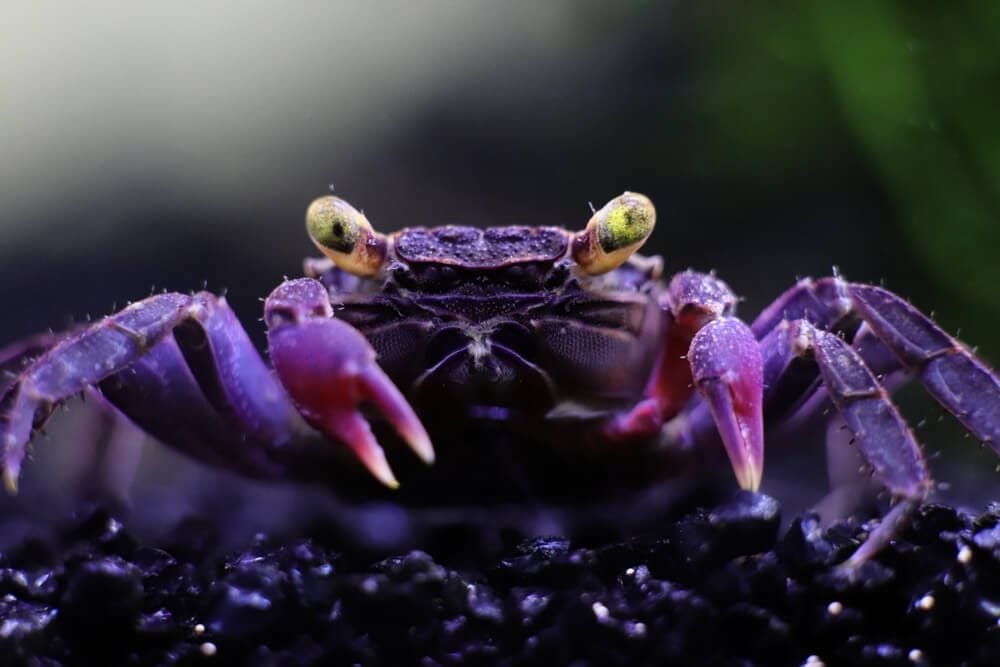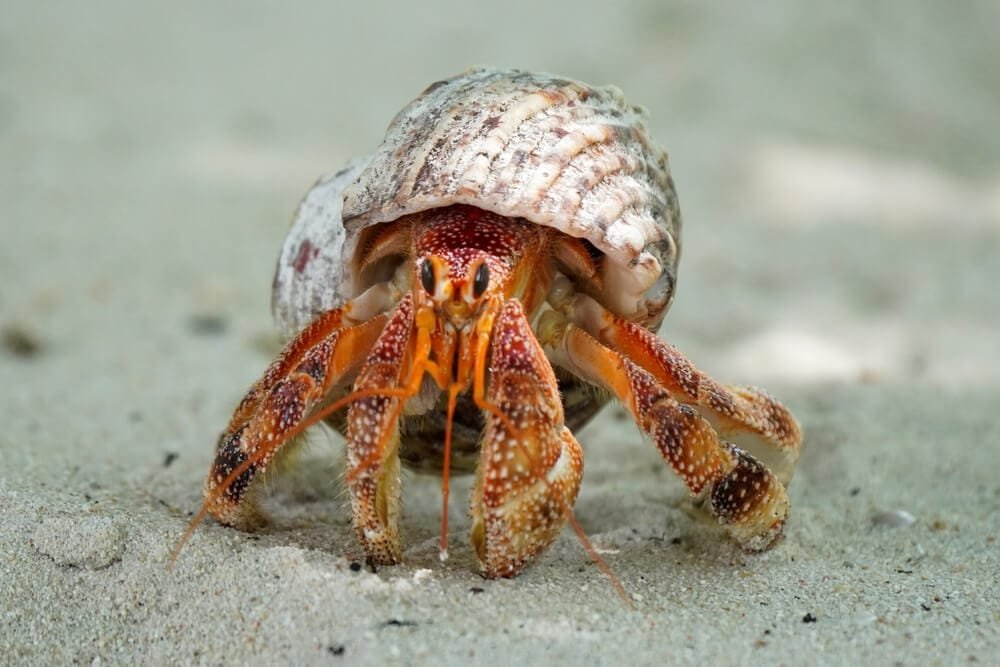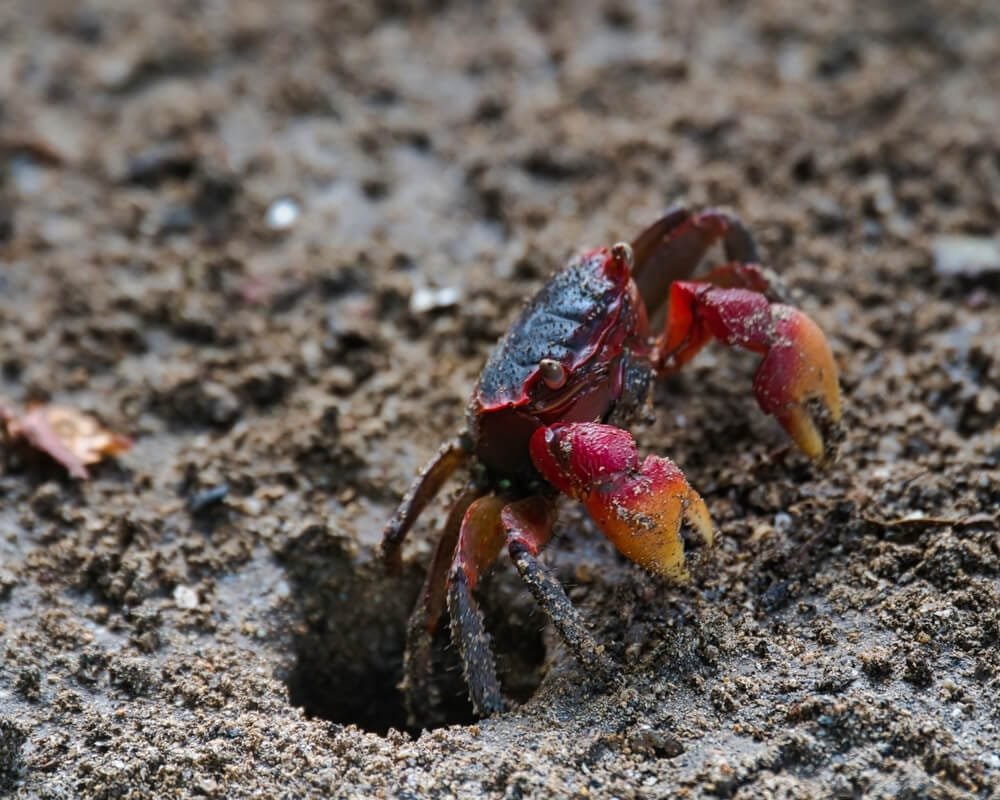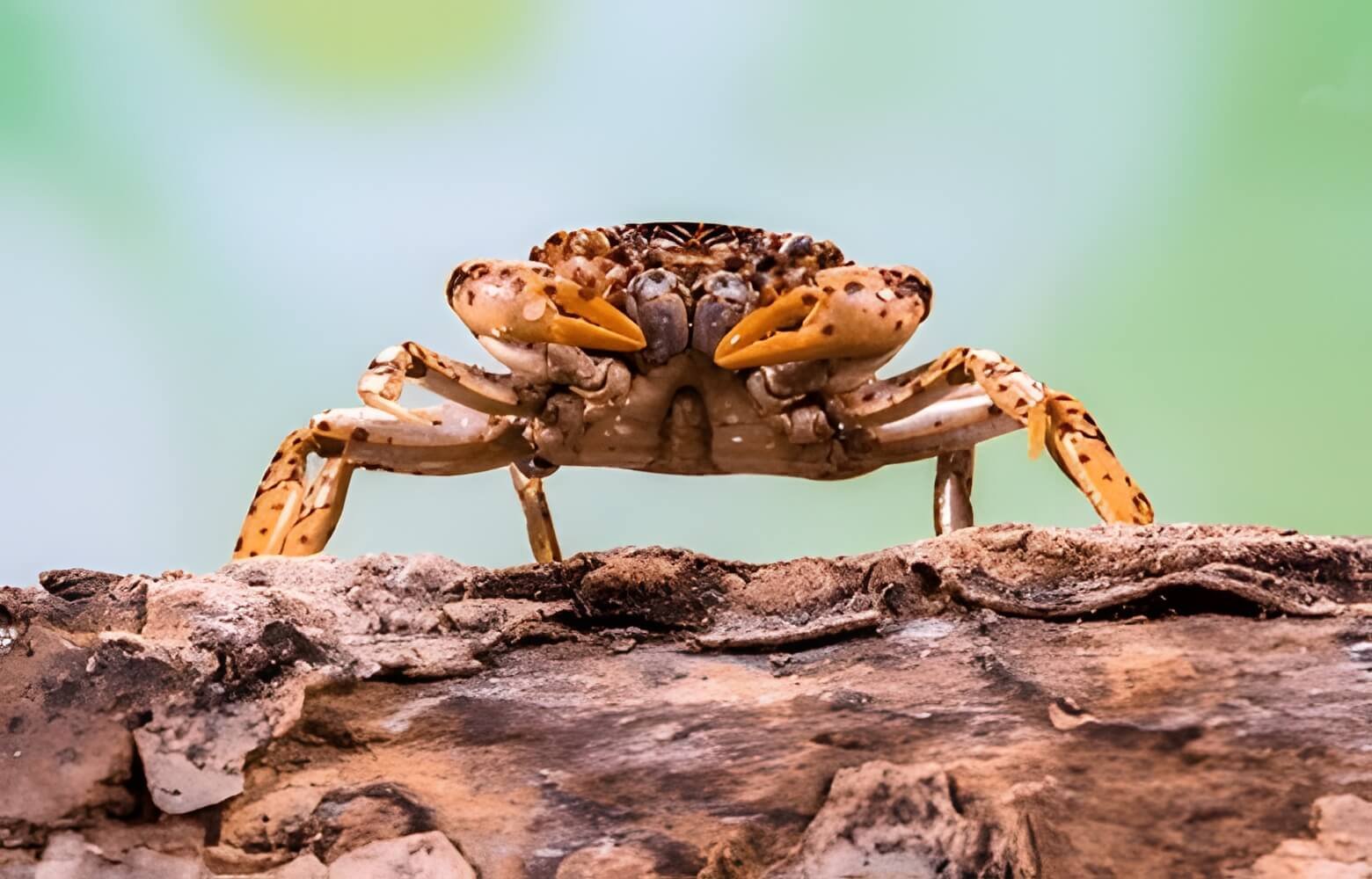Have you ever heard of the Vampire Crab? With its striking colors and unique behavior, the Vampire Crab is a fascinating creature that captivates the attention of both seasoned aquarium enthusiasts and novices alike. Hailing from the lush forests of Indonesia, these small, freshwater crabs are known for their vibrant shades of orange, purple, and deep red, which make them a standout in any aquarium.
In addition to their aesthetically pleasing appearance, Vampire Crabs also possess intriguing vampire-like qualities, such as their ability to climb trees and hang upside down. With their curious nature and captivating charm, the Vampire Crab is a must-have for any aquatic enthusiast looking to add a touch of uniqueness to their collection.
Introduction
Vampire crab, scientifically known as Geosesarma dennerle, is a fascinating and unique species of freshwater crab. With their captivating appearance and intriguing behaviors, these crabs have become increasingly popular in the world of aquarium enthusiasts. From their origins to their physical adaptations and inter-species relationships, there is much to learn about these captivating creatures.
Description
Vampire crabs are small-sized crustaceans that can reach a maximum size of about 1.5 inches. They have a flattened and oval-shaped body, with a distinctive carapace covered in a complex pattern of colors and markings. The most common colorations include shades of red, orange, yellow, and black. Additionally, their pincers are relatively small compared to other types of crabs. This unique appearance makes vampire crabs truly stand out among their aquatic counterparts.
Origin
The vampire crab is native to the island of Java in Indonesia. They inhabit the damp forests and waterlogged areas where they find suitable conditions for survival. These crabs have adapted to thrive in the humid and tropical climate of their natural habitat.
Appearance
One of the most striking features of vampire crabs is their vibrant coloration. Their bodies are adorned with intricate patterns and a mix of vibrant reds, oranges, and yellows, reminiscent of a mesmerizing sunset. This unique coloration is not only eye-catching but also helps them blend into their surroundings, providing natural camouflage. The combination of their small size and vivid hues makes vampire crabs a captivating addition to any aquarium.
Behavior
Vampire crabs are known for their interesting and distinct behaviors. They are primarily terrestrial in nature, but they require access to both land and water. These crabs are excellent climbers and will often venture onto trees and plants near their aquatic homes. When feeling threatened or in need of rest, they will retreat to their burrows or hide in crevices. This dual lifestyle, coupled with their captivating behaviors, makes vampire crabs intriguing creatures to observe.
Habitat
Natural Range
As mentioned earlier, vampire crabs are native to the island of Java in Indonesia. Their natural range extends throughout the lush forests and waterlogged areas of the island. The humid climate and abundant vegetation of this region provide the ideal conditions for these crabs to thrive.
Preferred Environment
In captivity, recreating the ideal environment for vampire crabs is crucial to their well-being. They require a terrarium setup that mimics the conditions of their natural habitat. This includes providing both land and water areas, with plenty of vegetation and hiding spots. It is important to maintain stable temperature and humidity levels to ensure these crabs feel comfortable and secure in their enclosure.
Territorial Needs
Vampire crabs are not highly territorial creatures and can coexist peacefully with one another. However, providing ample space within their enclosure is essential to avoid overcrowding, which could lead to stress and aggression. Each crab should have enough land and water area to establish their own territory and retreat when necessary.
Diet
Food Sources
Vampire crabs are omnivorous creatures, which means they consume a variety of food sources. In their natural habitat, they predominantly feed on fallen fruits, decaying plant matter, insects, and small invertebrates. In captivity, it is important to provide a well-balanced diet that consists of commercial crab food, such as pellets, as well as fresh vegetables, fruits, and occasional live or frozen foods like brine shrimp or bloodworms.
Feeding Habits
Vampire crabs are primarily scavengers and will actively search for food both on land and in the water. They have specialized appendages and claws, which they use to pick up and manipulate food. These crabs are known to exhibit an opportunistic feeding behavior, meaning they will eat whatever food sources are available to them. It is important to provide a varied diet to ensure their nutritional needs are met.
Reproduction
Breeding Behavior
Vampire crabs engage in complex courtship rituals to find suitable mates. Males will perform elaborate dances and displays to attract females. These displays involve waving and fanning their claws, as well as a series of movements aimed at impressing the female. Once a pair bonds, they will engage in copulation, where the male transfers sperm to the female.
Egg Development
After successful mating, the female vampire crab will carry the fertilized eggs on her abdomen until they are ready to hatch. This process usually takes around two to three weeks. During this time, the female carefully tends to the eggs, ensuring they receive the necessary care and protection. It is fascinating to observe the gradual development of the eggs as they undergo various changes.
Caring for Offspring
Once the eggs have hatched, the female vampire crab will release tiny, fully-formed juveniles into the water. Unlike many other crustaceans, vampire crabs do not undergo a larval stage. The newly hatched offspring resemble miniature versions of their parents and are capable of fending for themselves. However, it is important to note that maintaining stable water conditions and providing suitable hiding spots for the young crabs are crucial to their survival.
Physical Adaptations
Claws and Appendages
One of the notable physical adaptations of vampire crabs is their specialized claws and appendages. Their claws are relatively small compared to other types of crabs, and their walking legs possess sharp spines that aid in locomotion and climbing. These adaptations allow them to navigate their terrestrial and aquatic habitats with ease.
Coloration and Camouflage
The vibrant coloration of vampire crabs serves not only as an attractive feature but also as a form of camouflage. Their intricate patterns and shades of red, orange, yellow, and black help them blend into the leaf litter, fallen fruits, and other vegetation of their natural habitat. This coloration provides them with protection from potential predators and increases their chances of survival.
Interactions with Other Species
Predators
In the wild, vampire crabs face predation from a range of predators, including birds, reptiles, and larger invertebrates. To protect themselves, these crabs rely on their ability to quickly retreat into their burrows or hide in crevices. Their coloration also aids in camouflaging and evading potential threats.
Prey
As omnivorous scavengers, vampire crabs feed on various food sources, including fallen fruits, decaying plant matter, insects, and small invertebrates. They play a crucial role in the ecosystem by aiding in the decomposition process and controlling populations of certain small organisms.
Inter-species Relationships
Vampire crabs are known to coexist with other small aquatic creatures in their natural habitat. They often share their environment with frogs, fish, snails, and other freshwater invertebrates. In captivity, it is important to carefully select tank mates that are compatible with vampire crabs to avoid any potential aggression or competition for resources.
Threats and Conservation
Human Impact
While vampire crabs are not currently considered a threatened species, their natural habitat is under increasing pressure due to deforestation, pollution, and habitat destruction. As human activities continue to encroach upon their habitats, it is important to raise awareness about the conservation of these unique creatures and their fragile ecosystems.
Conservation Efforts
Conservation efforts are crucial to protect the natural habitats of vampire crabs and other species that inhabit the same ecosystems. Initiatives such as forest preservation, protection of water bodies, and raising awareness about the importance of biodiversity can contribute to the long-term survival of these captivating creatures.
Keeping Vampire Crabs as Pets
Tank Setup
Creating a suitable tank setup for vampire crabs requires careful consideration of their natural habitat. A terrarium with ample land and water areas is essential, along with plenty of plants, branches, and hiding spots. It is important to create a varied and engaging environment that mimics their natural surroundings.
Water Conditions
Maintaining stable water conditions is important to ensure the well-being of vampire crabs. They require clean, dechlorinated water with a neutral pH. It is also essential to monitor temperature and humidity levels within the enclosure to ensure they are within the optimal range for these crabs.
Dietary Considerations
Providing a varied and balanced diet is essential for the health of vampire crabs in captivity. Commercial crab food pellets can serve as a staple, supplemented with fresh vegetables, fruits, and occasional live or frozen foods. Offering a varied diet helps replicate their natural feeding behaviors and ensures they receive the necessary nutrients.
Care and Maintenance
Regular maintenance of the tank is essential to ensure the well-being of vampire crabs. This includes regularly cleaning the tank, monitoring water parameters, and checking for any signs of illness or stress in the crabs. It is also important to provide regular opportunities for exercise and mental stimulation, such as adding new hiding spots or rearranging the tank decor.
Interesting Facts
Origins of Name
The name “vampire crab” derives from the crab’s striking red coloration, which resembles blood, as well as its nocturnal behaviors. These crabs are not bloodsuckers, as their name might imply, but their captivating appearance and behaviors have earned them this fascinating moniker.
Unique Behaviors
One interesting behavior exhibited by vampire crabs is their ability to climb trees and plants near their aquatic homes. This unique trait allows them to access additional food sources and provides a safe retreat when needed. Additionally, their courtship rituals and the care they provide to their offspring showcase their complex social behaviors.
Popularity in the Aquarium Trade
Vampire crabs have been gaining popularity in the aquarium trade due to their captivating appearance and intriguing behaviors. Their relatively small size and ease of care make them suitable for both experienced and novice aquarium enthusiasts. However, it is important to ensure proper care and meet their specific requirements to ensure their well-being.
Conclusion
Vampire crabs, with their captivating appearance, unique behaviors, and fascinating adaptations, are truly enchanting creatures. Native to the island of Java, these crabs thrive in their lush, tropical habitats. As their popularity in the aquarium trade continues to rise, it is essential to understand their specific needs and care requirements to ensure their well-being in captivity. By appreciating and conserving these captivating creatures, we can contribute to the preservation of their natural habitats and the delicate ecosystems they inhabit.







